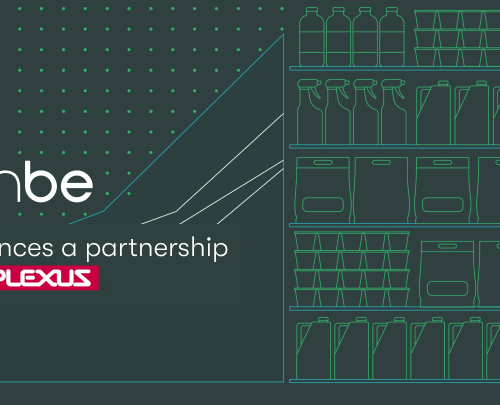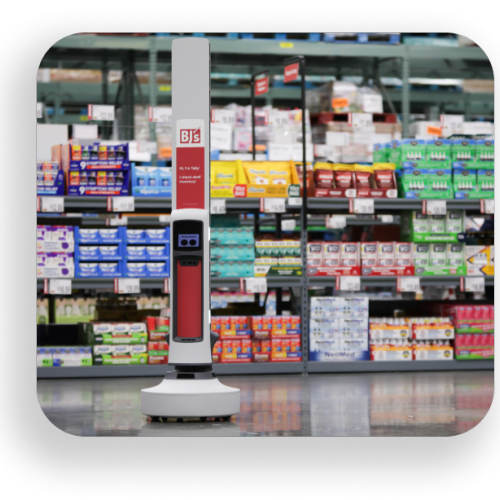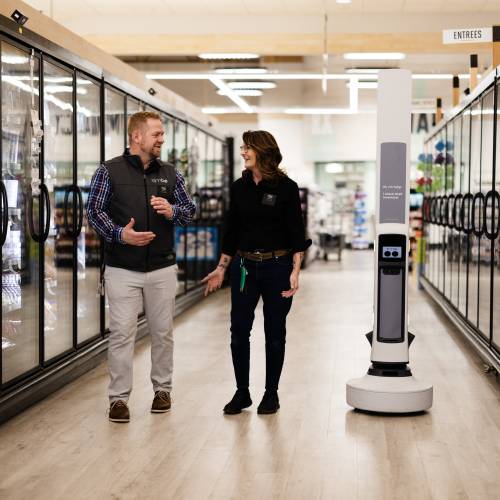
Welcome back to Shopper Talk, a blog series that spotlights people like you and me who make decisions every day about where to spend their money.
The shopping habits of millennial mothers shopping for children with food allergies:
In our latest installment, I had the pleasure of speaking with Anna, a millennial mother managing grocery shopping or her six-person family, which includes children with severe food allergies. This discussion highlights:
- The challenges families face in grocery shopping, especially when dealing with severe food allergies
- The significance of product availability and store organization for families with specific dietary needs
- How technology and apps can streamline the grocery shopping experience for busy families
Anna is a loyal SpartanNash shopper - a customer of Simbe’s. You can see Anna’s family in our SpartanNash customer video and read the SpartanNash Simbe case study here.
Families like Anna's, navigating dietary restrictions, represent the one in four Americans who avoid products containing major allergens such as milk, egg, and peanuts. They are part of the group that contributes over $19 billion annually to specialty food purchases, incurring an average of 5% more in monthly food expenses than the typical consumer to avoid health risks and allergic reactions.
Meet Anna - A Wife, Mother, and Social Influencer Navigating Severe Food Allergies in Grocery Shopping
Residing in Michigan, Anna juggles grocery shopping for her husband, herself, and their four children, two of whom have severe allergies. Beyond meal planning, she's dedicated to homeschooling, organizing family outings, and sharing her life with followers on TikTok, Instagram, and YouTube.
This conversation, lightly edited for clarity, highlights the evolving needs of families in grocery stores and the impact of shopping convenience on their satisfaction and loyalty.
Who are you buying groceries for?
I shop for our family of six: my husband, myself, and our four children, which includes a set of twins who just turned five, an eight-year-old daughter, and a nine-year-old son.
Our main challenge is catering to the severe allergies of our daughter and one of the twins. They're allergic to dairy and peanuts, which are in so many products. I'm always on the lookout to create meals that are safe and enjoyable for them while still feeding our large family. This used to make finding a grocery store where I can get everything we need particularly challenging. I used to have to go to multiple stores each week, sometimes more than one per day, before our local D&W got Tally.
I used to have to go to multiple stores each week, sometimes more than one per day, before our local D&W got Tally.
How many grocery stores do you visit per week?
I used to visit at least three of the following stores: D&W, Meijer, Aldi, Target, or Costco. It’s a time-consuming process, especially since these stores are not close to each other.
Keep in mind, on each trip I usually had all four of my kids with me. It turned into quite an exercise in patience, as I was simultaneously reading every ingredient label to ensure we avoided anything containing peanuts and dairy due to my kids' severe allergies.
Given the current economic climate, I'm really trying to stretch our budget, which meant comparing prices and hunting for the best deals across these stores. I particularly value stores that are well-organized and those that offer apps where I can match coupons to products, significantly easing the shopping process.
With four children in tow, it's crucial to know precisely where things are located, like whether an item is in aisle four or five. Our family time is much better spent together at home, not wandering the aisles of a grocery store in search of something we need.
Today, I always visit SpartanNash’s D&W store because I know I can trust that products will be available there, thanks to Tally.
Today, I always visit SpartanNash’s D&W store because I know I can trust that products will be available there, thanks to Tally. Our family time is much better spent together at home, not wandering the aisles of a grocery store in search of something we need.
Have you ever changed grocery stores due to lack of product availability?
So I used to utilize the store pickup option, but I found that nearly a third of the items I needed were consistently out of stock. They would bring my order to the car, only to tell me that several items weren't available, which was frustrating. This inefficiency led me to abandon store pickup altogether since I ended up having to visit multiple stores to find everything we needed.
Because of this, I stopped frequenting those stores that couldn't reliably stock what I needed. Initially, I used to spend a significant portion of our grocery budget there, sometimes up to $300 a week. Now, I only visit them for basic items and avoid using their shopping services.
Instead, like I’ve already said, I've found that I can confidently get most of what we need in one go at SpartanNash’s D&W stores, thanks to Tally, which has proven to be much more efficient and better suited to our family's needs.
I can confidently get most of what we need in one go at SpartanNash’s D&W stores, thanks to Tally.
I can confidently get most of what we need in one go at SpartanNash’s D&W stores, thanks to Tally.
Which specific products are hard to find at your local grocery stores, and how does their availability affect your choice of store?
I remember a few years ago it was almond milk. More recently, it’s been dairy-free cheeses. We obviously live in a culture that’s more health-conscious than ever, and people are curious to try vegan products, but these items fly off the shelves and we need them for allergy purposes.
Personally, when a store consistently stocks allergy-friendly products, I'm much more inclined to spend there. I want to support businesses that accommodate my family's needs.
On the flip side, if a store discontinues an essential product, I find myself switching to another store that does provide it, even if it means altering where I do most of my shopping. This decision is about convenience and ensuring my kids’ dietary needs are met, which ultimately saves us time and stress.
Are there grocery shopping tools or technology you’ve embraced to help simplify your shopping experience?
I use apps to compare prices before heading to the store. I actually use this approach for virtually everything I buy – both food and non-food items.
I always know that D&W’s tag prices will match what’s rung up at the cash register, again thanks to Tally.
Additionally, some stores’ apps are particularly useful as it pairs coupons directly with the items I'm buying, which simplifies the process significantly. It almost turns it into a game, matching up savings directly as I shop.
The 'shop-as-you-go' feature that many stores are adopting has been a lifesaver, too. I can scan items as I add them to my cart, keeping track of my budget in real-time and ensuring I'm applying all available coupons. This not only helps with budgeting but also helps me know where everything is located in the store, making the trip quicker and more efficient.
How can grocery stores improve the customer experience for you?
A well-organized store, free from clutter and unnecessary stocking bins, makes for a much smoother and enjoyable shopping experience. While I have appreciated the phenomenal customer service at D&W for years, it’s gotten even better since they introduced Tally. I think that’s because Tally automates repetitive tasks, freeing up store associates’ time. The D&W team seems like they’re happier in their jobs since then, too.
While I have appreciated the phenomenal customer service at D&W for years, it’s gotten even better since they introduced Tally. I think that’s because Tally automates repetitive tasks, freeing up store associates’ time. The D&W team seems like they’re happier in their jobs since then, too.
It's also crucial to keep allergy-friendly products in stock consistently. While these items might not be bestsellers, they're essential for families like mine, and I'm willing to spend more in stores that reliably provide them.
And while it might seem small, I love when a grocery store has a coffee shop inside. It makes the experience all the more enjoyable!
Conclusion
Anna's story highlights the challenges and considerations that families, especially those dealing with food allergies, face during their routine grocery shopping trips. Her experiences underscore the critical need for accessible, allergy-friendly products and the importance of store organization and technology in making shopping more manageable for busy families.
Join us in exploring more shopper perspectives by subscribing to our monthly newsletter here.




